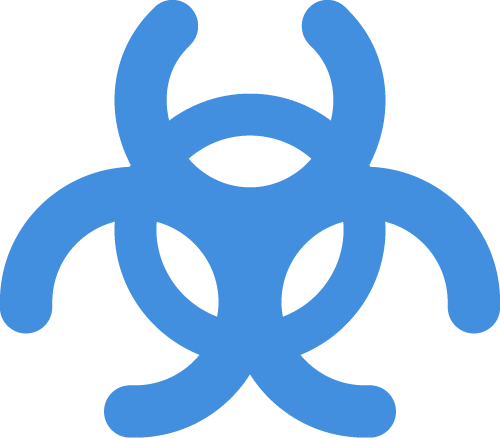
By Winnie Byanyima, UNAIDS Executive Director; and Tomas Tobé MEP, Chair of the European Parliament’s Development Committee
Forty years since the first cases of AIDS were diagnosed, the fight against HIV goes on. Although the world has developed the scientific knowledge and medical expertise to keep people living with HIV alive and healthy and prevent new HIV infections, we are not on track to end the AIDS epidemic as a public health threat by 2030.
In 2019, almost 700,000 people died from AIDS-related illnesses. A staggering 1.7 million people were newly infected by HIV – more than three times the target set in 2016, which would have put us on course to end the AIDS epidemic.
The medicines, information, and prevention tools are simply not reaching the people who need them most. We need a new approach that reduces the inequalities that drive the AIDS epidemic and puts people at the centre, prioritising human rights, respect, and dignity.
Social injustices and inequalities fuel epidemics. For example, the AIDS epidemic is having a devastating impact on an entire generation of young women and girls in sub-Saharan Africa. Around 4500 adolescent girls and young women aged 15-24 acquire HIV every week in this region, and they are twice as likely to be living with HIV as their male peers.
At the same time, girls and young women face sexual and gender-based violence, unintended pregnancy and may be forced to drop out of school. Yet, completion of a high school education, including comprehensive sexuality education, is one of the surest ways to keep young women and girls free of HIV.
It is also deeply concerning that more than 60 percent of new HIV infections globally occur among key populations (gay men and other men who have sex with men, people who use drugs, sex workers, transgender people, prisoners, and migrants) and their sexual partners. Entire communities and groups of people are being locked out of the right to health, well-being and to dignity because they are marginalised and criminalised.
This can – and must – change.
The UNAIDS Global AIDS Strategy 2021-2026 provides clear and effective guidance on what needs to be done to create fairer societies to get the world back on track to end the AIDS epidemic as a public health threat by 2030.
The strategy aims to put people at the centre, removing social and structural barriers that prevent people from accessing HIV services, empowering communities to lead the way, strengthening and adapting systems so they work for the people who are most acutely affected by inequalities, and fully mobilising the resources needed to end AIDS.
The European Union has the political weight, the financial clout, and the policy tools to significantly contribute to the global fight against HIV/AIDS. The European Parliament has just adopted a Resolution on Accelerating progress and tackling inequalities towards ending AIDS as a public health threat by 2030 in response to the Global AIDS Strategy.
It outlines concrete actions that the EU should take to end AIDS once and for all. These include supporting partner country efforts to build strong and resilient health systems able to deliver HIV-sensitive universal health coverage, to prioritise health as part of EU-Africa relations and to scale-up investments in UNAIDS and the Global Fund to Fight HIV, Tuberculosis and Malaria.
The resolution also seeks to mobilise EU leadership in addressing the human rights and gender inequality drivers of HIV/AIDS and to ensure that the EU supports community-led responses as key components in an effective HIV/AIDS response.
Next month, countries will gather for the United Nations General Assembly High-Level Meeting on HIV/AIDS where they are expected to back a bold new plan to end the AIDS epidemic, including new targets for 2025.
By achieving these targets, the number of people newly infected with HIV will fall to 370,000 by 2025, and the number of people dying from AIDS-related illnesses would be reduced to 250,000. Tackling the intersecting inequalities that fuel the HIV epidemic will be crucial to success.
The COVID-19 pandemic has exposed profound social and economic inequalities, underfunded public health systems, and the fragility of global responses. Certainly, COVID-19 is threatening to undermine hard-won gains made by the HIV/AIDS response, further threatening progress towards ending AIDS by 2030.
At the same time, countries are leveraging the HIV infrastructure and lessons learned from dealing with the HIV epidemic for a more robust response to both pandemics. Indeed, we have a unique opportunity to translate the right to health into rights-based, equitable, people-centred systems.
We must utilise this window to intensify global solidarity, including sustained investments in development, to build more resilient societies that reinforce everyone’s security.
The EU and UNAIDS share core values of humanity and equality to ensure that no one is left behind. Ending the AIDS epidemic by 2030 remains within the world’s reach but it cannot be done without creating stronger societies built on the principles of gender equality, social justice, and the recognition of universal human rights, including sexual and reproductive health and rights.
Failure to do so will put the lives of millions at risk and undermine the common mission of achieving the 2030 Sustainable Development Agenda, including the end of AIDS as a public health threat.
This op-ed was first published on theparliamentmagazine.eu
UNAIDS
The Joint United Nations Programme on HIV/AIDS (UNAIDS) leads and inspires the world to achieve its shared vision of zero new HIV infections, zero discrimination and zero AIDS-related deaths. UNAIDS unites the efforts of 11 UN organizations—UNHCR, UNICEF, WFP, UNDP, UNFPA, UNODC, UN Women, ILO, UNESCO, WHO and the World Bank—and works closely with global and national partners towards ending the AIDS epidemic by 2030 as part of the Sustainable Development Goals.








